Tue Mar 2 '21 Announcement
about 3 years ago
– Tue, Mar 02, 2021 at 10:36:27 AM
Hello Extraordinary Benefactors!
In our last update, I noted that we'd hit a Stretch Goal and were on our way towards unlocking another. Well...

ACHIEVED! - At $60,000 in Funding – PENNY DREADFUL – Originally released as a serial novel in 2004, Penny Dreadful by Kevin Andrew Murphy has been updated and reformatted for into a digital edition. This Mage: The Ascension novel will be added to the rewards list of all funding contributors to this project.
We'll have some brand new Victorian Era Mage: The Ascension fiction later this week! But for right now, let's talk about what's next wtih our Stretch Goals.


At $63,000 in funding – Digital Wallpaper – Dress up your monitor with a wondrous scene from Victorian Mage, which will be added to the rewards list for all backers.

At $66,000 in funding – Victorian Mage Jumpstart – An introductory scenario, designed to introduce new players to the game, systems, and setting will be created and combined with the Instant Mages characters as a supplemental Jumpstart! PDF, which will be added to the rewards list of all backers receiving the Victorian Mage PDF.

At $70,000 in funding – Bizarre Tales & Unusual Characters – A small companion book with playable stories and intriguing ne’er-do-wells will be created and released in a supplemental PDF, which will be added to the rewards list of all backers receiving the Victorian Mage PDF.

Now that we've got a half dozen Ready-Made Characters, let's buff up that supplement again by adding a starting scenario and other support to turn it into a full Victorian Mage Jumpstart!
To get there, we'll have to unlock our Digital Wallpaper... and we're almost there!
We're flying fast through these goals, and just finishing up our first week. It's been extraordinary! Of couse!
One other quick note - I know many backers and potential backers were concerned that our experiment with Indiegogo on this project might reduce the amount of funding that went toward our Stretch Goal targets, as some hesitant backers waited to pledge during the post campaign BackerKit Pledge Manager rather than during the campaign.
Well, as revealed in the Onyx Path Monday Meeting Notes blog posted yesterday (<here>), we will be adding any funds added in BackerKit towards our announced Stretch Goal targets for a limited time. That means that we need this campaign to keep trucking along, so we can announce new Stretch Goal projects, but don't worry if we miss by just a little bit at the end... because we'll have a window after the campaign to see if we can top up our total funding to unlock those final targets.
Although, with the way we're going, we may not need any extra time! We're already crushing targets! Let's just keep at it!
SO: let's unlock a Digital Wallpaper! Let's fund a Jumpstart! Let's add another new supplemental PDF to our rewards and get some Bizarre Tales and Unusual Characters created for our games! And let's see if we can't announce another Stretch Goal or two before we get to the finish!
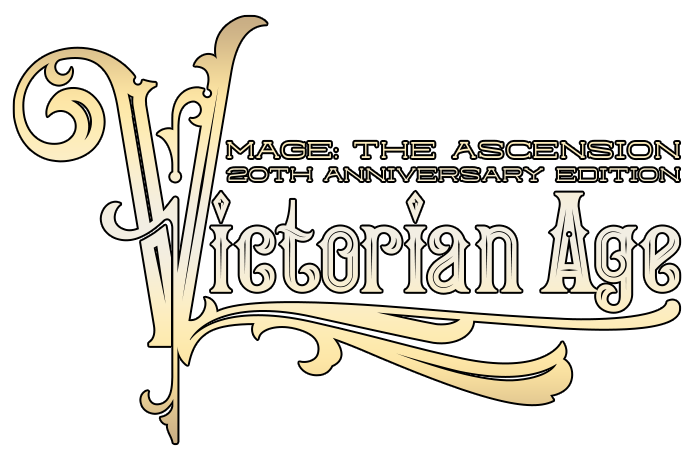
And a reminder that we'll be sending out the next manuscript preview via e-mail tomorrow, so if you're interested in seeing the current draft manuscript, please back this campaign in the next 16 hours so I'll have your info before I send it out! I'll send an update when it goes out... remember to check your spam filter just in case it gets stuck on the way!
#M20VA
#VictorianMage
Sun Feb 28 '21 Announcement
about 3 years ago
– Sun, Feb 28, 2021 at 07:27:44 AM
Hello Extraordinary Benefactors!
Mirroring yesterday's update, I've got a podcast to share and then a preview of Chapter 3. But before we get to that... We've unlocked another Stretch Goal!

ACHIEVED! - At $55,000 in funding – Additional Mages – A second trio of Ready-to-Play characters will be added to the Instant Mages PDF supplement, providing further options and opportunities!
We've now got a half-dozen Ready-Made Characters coming our way for these Victorian Ages! Great job everyone!
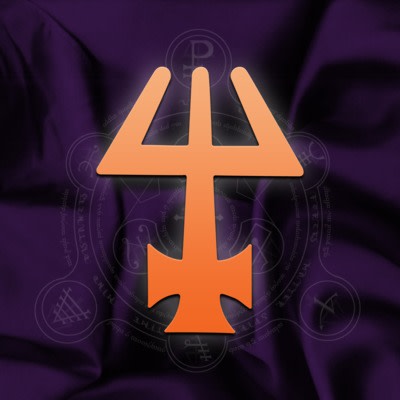
MAGE: THE PODCAST - Victorian Mage with Ian AA Watson <available here>
The awesome folks at Mage: The Podcast connected with our excellent Victorian Mage co-Developer Ian AA Watson to discuss this book and our campaign.
Show notes: "The 19th century saw the West push to conquer the world but what were mages up to? The Technocracy rises, the American frontier closes and dozens of societies resist colonialism in Onyx Path’s newest crowdfunding campaign currently on Indiegogo."
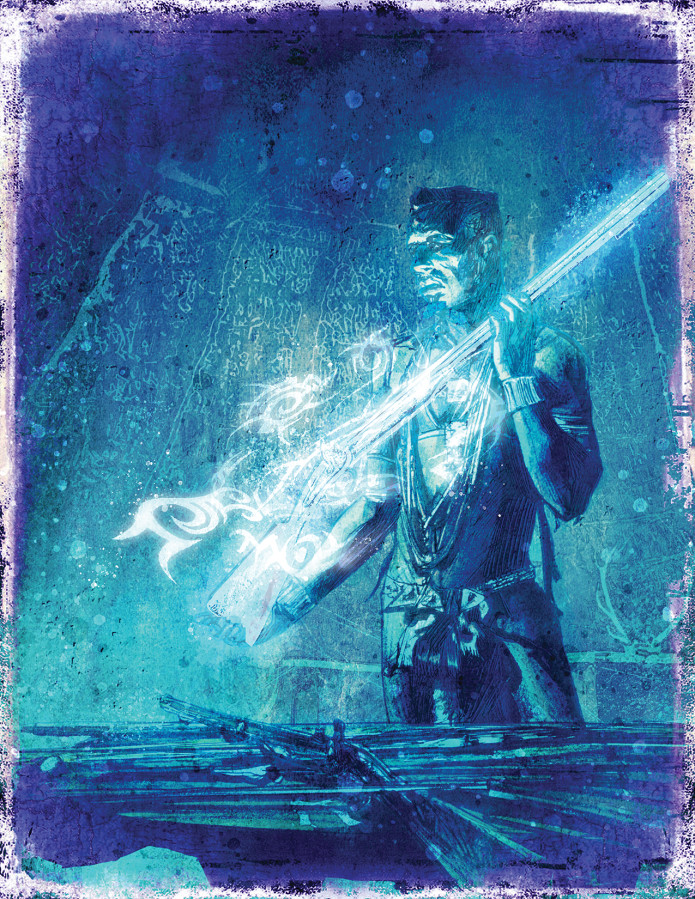
The Blocs of the Order of Reason
Although not technically Conventions of the Order of Reason until the Victorian Reformation in 1897, the following Blocs form the backbone of the Order’s politics during the Victorian Age. At least two member Conventions make up each Bloc’s political base, with the Grand Faculty and the League of Constructors vying for individual scientists within the Guilds of Analytical Reckoners and Electrodyne Engineers.
The Exploratory Society
The siren song of the unknown drives the Celestial Masters and Void Seekers to the furthest reaches of the Tellurian. No matter how many enlightened officers fall to the indescribable horrors of the terrestrial and celestial void, the Explorators still ride out into the unknown. The Explorator bloc holds two of the few remaining conventions with an unbroken lineage tracing back to the first gathering of the Ivory Tower. The Void Seekers and Celestial Masters claim this legacy with no small amount of pride, but their status as a unified bloc within the Order of Reason is much more recent.
For most of the Order’s history the Celestial Masters and Void Seekers each served as playful foils to the other. Old Seekers scoffed at the frivolity of wandering among the stars when the Earth hid so many undiscovered wonders and more than a few Masters chided the Seekers for their provincial discoveries. For the Luminaries outside the exploring conventions it was easy to think the two groups bore legitimate resentment for the other, but nothing could be further from the truth. Underneath their barbs an unspoken competition drove the explorers to push each expedition further into the unexplored wilds of the void, not only to sate their need for discovery, but to make sure their flag waved highest over the ever expanding borders of empire.
It was this competitive spirit that drove Sir William Herschel to wander out beyond the boundaries of the ancient celestial maps. No Master had ever returned from beyond the known void, and the Order quickly wrote off his expedition into the darkness as lost. When he returned years later with celestial cartography leading to the ice giant Uranus, the Explorators bloc as it is known today truly took form. The empire might stretch to every corner of the globe, but when Herschel banished even the farthest boundaries of the celestial void the rest of the Luminary Order took notice.
Each year the Void Seekers and Celestial Masters join each other’s expeditions in unprecedented numbers. Their cooperation was born out of the unified need to see, map, and define the farthest reaches of existence, but it is apparent the two groups are capable of truly revolutionary work when properly aligned. The Celestial Masters no longer spend endless nights mapping the stars; now they study the fundamental nature of the heavenly realms through enlightened spectroscopy. What was once a need to merely walk among the heavens to banish oppressive gods has grown into an insatiable need to understand the most fundamental secrets of reality. This study of the high realms guides the Void Seekers work in defining their own home, allowing them to carve clean perfect slices of time and structure out of the incoherent reality zones currently covering the world in chaos.
The Explorators are about to undertake their greatest work to date. Calculations made early in the century have revealed that a pathway to Venus will open, and the exact moment the topography of the heavens will be visible to anyone with the Enlightenment to see. The two conventions are planning a great expedition to the islands of Hawai’i to gaze into this schism between the worlds and create a definitive map of the solar system. The Invisible Exchequers refused three times to fund the project, claiming it as a waste of resources. That was before the lead designer for one of the new Electrodyne skyships, Lord Thompson, personally solicited funding from one of the oldest masters of the Golden Guild, playing on his rivalry with the newly formed Exchequers. The cornerstone of Lord Thompson’s practice is etched into the bridge of his masterwork: “To Measure is to Know”. Understanding this deceptively short phrase is central to mastery of the Explorator’s arts.
Once this expedition is complete, the Explorators will have a perfect measurement of the spaces between worlds, and Lord Thomas knows this discovery is necessary if any of his ships are to return from the deep void. The incoherent ebb and flow of the aetheric currents can be tamed if they can only be measured, and just as the early Void Seeker banished that dragons lurking at the edge of the map, the Explorators will cast them out beyond the edge of the celestial sphere, ensuring humanity takes its place among the stars.
As the expedition to observe Venus’ revelations draws closer, the excitement within the Explorators’ halls is drawing the critical eye of the Lightkeepers. The work of perfecting the empire on the ground is far from over, and several masters from the Ivory Tower worry that the Seekers are being distracted by the lure of a return to the high adventures of their youth. Thus far the Lightkeepers are allowing the expedition to commence because as the Celestial Masters have repeatedly reminded, a perfect measurement of the skies will allow the Order to define the stars. No matter how skilled their conventions’ great hunters are, there are always new threats sneaking through the celestial veil. If the skies can be tamed as perfectly as the world’s frontiers, then those hunters may be able to hang up their guns and serve a good beyond putting down the deviants of the world.
The Explorators know there will always be another horizon to cross, another savage threat to fell, but they also know the Lightkeepers tolerate their whims only while they are useful. More than a few of the most adventurous spirits within the bloc chafe under the yolk of their responsibilities to the Order, but their superiors keep them in check. The spirit of adventure is necessary to drive the Explorators to Enlightened discovery, but children standing wide-eyed at the bow of their first ship must grow into captains guiding the world through uncertain waters. That is not to say the admirals of the Order’s maritime fleet trust or believe in the money-changers and bureaucrats writing their orders, but they have seen what lurks beyond the veil, and their first loyalty is keeping Queen and country safe from threats only they can understand.
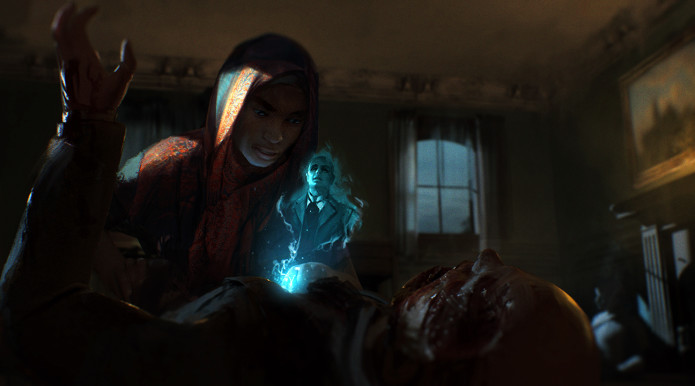
The Grand Faculty
Wanting neither master nor servant, knowledge is a force of its own, as primal and powerful as a thunderbolt. There is no knowledge that should not be sought, for it will be found, and if not by the Order, then by whom? For what purpose? Good or ill? The Grand Faculty propose to bring science and reason to the masses. And why shouldn’t they? Though the Sleepers have only just begun to learn of the true nature of disease, they have already taken great steps to fight back contagions. This century alone has seen the Sleepers step from superstitious beliefs about miasma and bad air being the source of illness to creating vaccines, sanitizing water sources, and even “Pasteurizing” foods to cleanse them.
In the view of the Order, millions of Sleepers have been saved through the dissemination of knowledge. Not only has it softened the blow of multiple epidemics, countless more have been avoided entirely. After the Great Stink of 1858 made it obvious to even the dullest among them that London needed to be fixed, the Sleepers made it happen. While the Grand Faculty had pushed the issue, the people didn’t need any further help from the Order of Reason to dig out millions of cubic feet of earth and run 13,000 miles of pipes to fix the London sewers. Ordinary people, armed with ordinary knowledge, did it themselves.
That’s the goal of the Grand Faculty: to arm the planet with the knowledge it needs to run smoothly. It’s wildly inefficient to continuously save the world when you can simply teach the world to stop getting into trouble. The Faculty is having a massive effect; even at the basest level, it’s impossible to underestimate the boon that this has been to the Order. Sleepers are turning from old wives’ tales, from occultism, from the nonsense of the Traditions to Science, Reason, and the Order. It will soon become impossible for those among the superstitionalists to ignore the correctness or power that Reason imparts. Thus, it is through the advancement of knowledge that humanity will be empowered, and the world will become a vast technocracy.
Politically, the Grand Faculty regularly butts heads with the Exploratory Society. Although the Seekers frequently come into contact with interesting civilizations, they never do so peacefully. While it would be a mistake to see the Faculty as an endlessly benevolent group that would never exploit indigenous people for their technology, they at least recognize that indigenous peoples have value. That’s something that the shoot, loot, and scoot members of the Explorators almost never believe. The closest the Explorators come to valuing other people is holding slave markets and assigning a literal price to purloined flesh and labor.
The Ivory Tower
The world grows ever larger. As British exploration, expansion, and colonization efforts continue, the Order of Reason strives to fulfill Prince Albert’s mandate to bring peace and stability to the world. While the other blocs focus on the new discoveries, scientific advancements, and economic advantages these new-to-the-empire lands open up, the Ivory Tower sets their sights on one overarching goal: global unity.
The sheer abundance of distinct and disparate cultures they’re aiming to consolidate might be overwhelming for other blocs to consider, but the challenge invigorates the Ivory Tower. The bloc’s member Conventions are new in name only. They’ve been doing this work for centuries.
In lands the Crown sets its sights on, the bloc supports both missionary and military operations. Wherever the empire has gained a foothold, they focus on supplanting indigenous cultures with Eurocentric ideals. The Ivory Tower helps impose laws that expropriate colonized countries’ power and place it in the Crown’s control.
At home, the bloc spreads the notion that the colonies’ indigenous peoples are lesser — less civilized, less intelligent, less capable of governing themselves — and that, therefore, Britain’s stewardship is for their own good. Both scholarly works and pulp novels support this portrayal, many of them published by Ivory Tower-backed presses.
The Lightkeepers, who stand alone in the Ivory Tower for a majority of the period, continue the crusade started by their predecessors in the Cabal of Pure Thought. No longer do they wish to unite the world under one Christian church. Now, they set their sights on a single, secular world government, run by politicians the Lightkeepers have quietly and deftly maneuvered into place. Though the Lightkeepers are no strangers to eliminating threats and removing dissenters themselves, the talents of Inspector Rathbone’s Skeleton Keys are a welcome addition to the bloc in the latter half of the century. A significant number of the Skeleton Keys’ members are police officers and inspectors, opening extra avenues of authority to the Ivory Tower’s goals.
This is all, of course, for the benefit of the Sleepers — or so the magi tell themselves. The Exploratory Society and the Grand Faculty push both physical and theoretical boundaries. The League of Constructors turns their materials and hypotheses into working wonders. The Syndicate funds both expeditions and industry. Someone has to be certain these improvements — and the knowledge gleaned from them — are safely monitored for the good of the Masses. The Ivory Tower keeps careful track of its colleagues’ plans. It openly advocates for those that advance its agenda, and strenuously objects to those it deems frivolous or a waste of resources. This has led to friction between the Lightkeepers and the more adventuresome Exploratory Society, especially those voyages proposed by the Celestial Masters. At least the Void Seekers’ earthbound discoveries show immediate benefits.
 For more information on the Order of Reason and the Victorian Age as seen through the eyes of M20, please join our campaign before Wednesday to receive a preview of the current draft manuscript! On Wednesday morning, I'll be sending all backers links to download Chapters 1-4, and we'll repeat the process each Wednesday for the remainder of the campaign, adding new chapters each week. Before we're done, the entire draft manuscript will be available for you to read.
For more information on the Order of Reason and the Victorian Age as seen through the eyes of M20, please join our campaign before Wednesday to receive a preview of the current draft manuscript! On Wednesday morning, I'll be sending all backers links to download Chapters 1-4, and we'll repeat the process each Wednesday for the remainder of the campaign, adding new chapters each week. Before we're done, the entire draft manuscript will be available for you to read.
And comment on! That's right - I'll also be sending a feedback form, which the Onyx Path team will use to help them guide this draft through the next editing and development stages! With your help, they can make the book even better! If that's possible!
Please continue to spread the world on your social media and in your social circles! We've unlocked one goal since yesterday, and already we're already on our way to unlocking another! Together we're working magick!
#M20VA
#VictorianMage
Sat Feb 27 '21 Announcement
about 3 years ago
– Sat, Feb 27, 2021 at 08:14:28 AM
Hello Extraordinary Benefactors!
Today we're going to get a quick preview into Chapter 3, which details the Order of Reason during the Victorian Age. But, before we dig into that, Im going to share a podcast that has even more information about this project and the work that's gone into it.

Onyx Pathcast Episode 144: Victorian Mage <available here>
The latest episode of the Onyx Pathcast is now out, and Eddy and Dixie interview developers Ian A. A. Watson and Chris Allen about Victorian Mage, and discuss:
- What is this book called?
- How do you fit so much into one book??
- We had to address colonialism and imperialism, obviously.
- Chris is the history guy and Ian is the Mage guy!
- Why is Ian here, anyway?
- What’s Chris’ Mage history?
- A bit on the process of diluting Mage lore into one book
- How they picked what historical events to include
- Some more on imperialism
- Mage history that had to go in!
- Mimes?
- More historical tidbits!
- How does magick work differently in the Victorian era?
- Indiegogo!
- Spoilers for M20 Victorian!
You've got questions - they've got answers! Give it a listen when you have a moment!
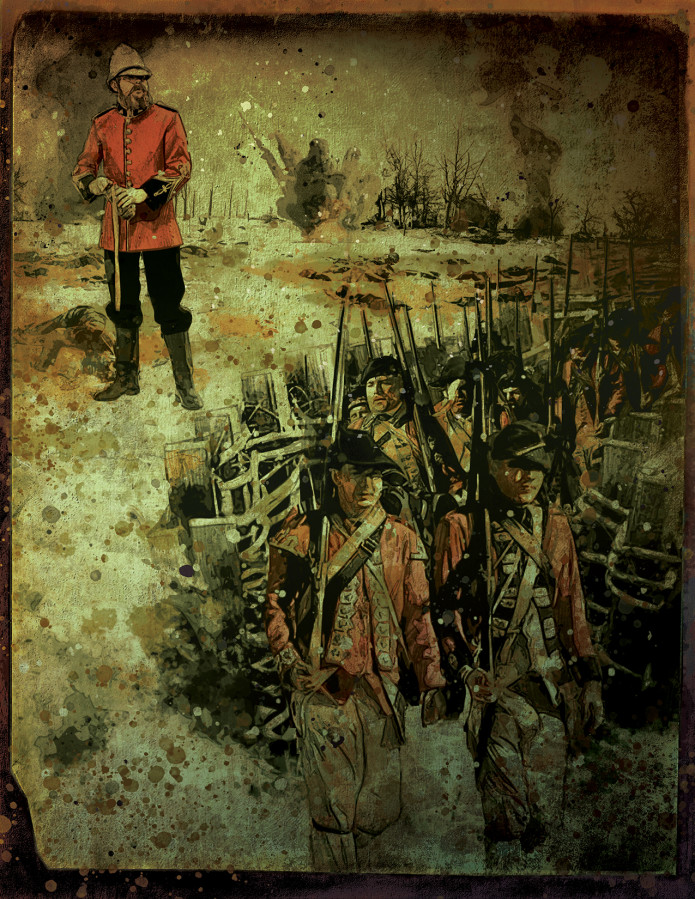
Since the first sparks of the Renaissance, the Order of Reason has sought to usher humanity through the gates of Enlightenment. Now, in the wake of the Industrial Revolution, the Order stands ready to transform the world again. Through science and steel, humanity will conquer illness, famine, and poverty. Though the plumes of factory smoke and waste of city life may cost a few hundred thousand lives here and there, Luminaries believe this is a sacrifice that serves the greater good: beginning a new age of prosperity. The Order stands in stark contrast to the superstitious members of the Council of Nine, shunning occultism in favor of furthering scientific understanding of the world. Exploration, experimentation, research, and debate are their tools, and they seek to use them to elevate humanity.
Most members of the Order of Reason truly believe theirs is a noble goal. They will kill so many and destroy so much in the pursuit of this shining ideal, and it will still not be enough to forge their envisaged perfect world from the ashes.
The Order of Reason Through the Victorian Age
The Order of Reason’s storied history stretches back to the so-called Dark Ages, a fitting place for the Light of Reason to emerge. Though the Order began as a ragtag coalition of militant factions tired of the existence of occultists, it thrived over the centuries that followed to become a world-spanning power. Like the devices that its scientists invented, so too did the Order reinvent itself time and again, culminating in the Conventions of the Victorian Reformation and the Technocratic Union that lies beyond.
From Dark …
Arguably the first members of the Order of Reason, the Craftmasons were a group of scholars who found the arcane teachings of the Order of Hermes an anathema. Where the main body of the Hermetics sought to keep magic to themselves, a gift reserved for the elite, the Craftmasons viewed knowledge as something to be shared with the people, for the betterment of all of humanity. This fundamental difference of opinion culminated with the Masons breaking with the Hermetics and going their own way.
Depending on whom you believe, either the Hermetics hounded the Craftmasons, forcing the renegades to take up arms against their former allies, or Stephen “Robin Hood” Trevanus started a military campaign which forced the Hermetics to defend themselves. Regardless of who started it, it was clear by 1183 that there would be no peace between the two sides. After several decades of successful raids against the Church and local magi of Nottingham, Trevanus had honed his militant sect into a fighting force. He took his band across the English Channel to France in 1210.
There, the Craftmasons encountered countless magi, trade, and artisan guilds who shared their enemy. With grievances ranging from magical plagues to old-fashioned extortion, there was no shortage of allies for the Craftmasons. Trevanus mustered his forces for a confrontation at the White Tower of Mistridge and opened fire with cannons. Few Hermetics at the Covenant survived the battle. No one knew it at the time, but those were the first shots of the Ascension War.
…To Light
In the wake of their success in France, the Craftmasons allied with the Golden Guild, to the benefit of both factions. Exactly one century after the fall of Mistridge, the Craftmason Council took the idea of partnership to its natural conclusion: a society of magi that would benefit the world. It sent invitations around the world, though most concentrated in Europe. In 1325, the groups gathered in Mistridge, the site of their first victory. It was here in the Languedoc-Roussillon region of Southern France that they convened the Convention of the Ivory Tower.
Several large factions joined the Craftmasons: the Cabal of Pure Thought, Celestial Masters, Cosian Circle, and Solificati. Beyond these, a handful of independent scientists also attended. After a month of conferring, negotiating, and planning the future of the world, they invited the Artificers, Golden Guild, and Void Seekers to fill the gaps of knowledge among the existing groups. The Order of Reason was born, eight member-factions strong.
Unfortunately for the nascent organization, the alchemists of the Solificati saw themselves as shut out from the decision making of the Convention, as well as out of place amongst the rest of the scientists who often dismissed alchemy as too steeped in occult ritualism to be taken seriously as a science. Within a decade, the Solificati abandoned the Convention to join the Traditions. Shocked by the seemingly sudden departure of the Solificati, the newly formed Inner Circle demanded more information and insight into their membership to prevent such an event from ever occurring again. They created a secret police society answerable only to them. Records of the goings on of this secret society are spotty, at best.
As the Renaissance birthed a new world, the Order saw itself go through changes. The first two members of the Order, the Craftmasons and Golden Guild, went head to head in a struggle to determine the best solution to the Diggers Rebellion in 1649. The Diggers were a socialist commune of farmers who routinely disregarded property rights, much to the chagrin of their landlords. Deep believers in the idea of the greater good, the Craftmasons saw the Diggers as a model for the common people lifting themselves up. At the same time, the Golden Guild saw the landowners as victims, swindled by their tenant farmers. Even the charismatic William Trevaine — great-grandson of Stephen Trevanus — was unable to break this stalemate.
By 1670, it became clear that neither side was going to give ground and the Inner Circle gave a previously unthinkable order. The High Guild, the Cabal of Pure Thought, and an unknown faction (presumed to be the Inner Circle’s secret police) swarmed the Craftmasons, attacking in an overwhelming wave of magic. If there were any survivors, they kept quiet about the fact.
In the wake of the Craftmasons’ destruction, a key guiding principle of the Order of Reason changed. No longer was it the Order’s mission to spread knowledge and power and lift all of the world up; it was the Order’s mission to create a perfect world as they saw fit. Scientific achievement and technological progress would benefit the people, but on the Order’s schedule. The Craftmasons’ cornerstone belief that information should be free was as dead as its membership.
Over the following centuries, the Order saw the birth of new guilds and orders, many of which were at least friendly to the group. Examples of these new scientific societies include the Voltarian Order, founded in 1806, and the Difference Engineers, founded in 1823. While not signatories of the original Convention, these new groups began working alongside the Order.
Albertan Reformation
After Queen Victoria ascended to the throne in 1837, her consort Prince Albert took a hand in creating a stable atmosphere for scientists, bringing the Age of Discovery to its apex. This provided the social framework that the Order needed to cement themselves as the power behind the throne, as well as the guiding force of Europe and the rest of the world. Now known as the Albertan Reformation, the face of Europe was forever altered by these years. A mere three years into the Queen’s reign, Lady Ada King of Lovelace created what was believed to be the first computer program, designed for Mr. Babbage’s theoretical Analytical Engine, giving the world a glimpse of information science.
The Difference Engineers, having already constructed several analytical engines, had mixed feelings about releasing this technology to the general public. On one hand, they were proud that the Territory of Europe was changing to permit more sophisticated technologies, but several of the programs they had developed could cause destructive weather patterns that they’d rather the sleepers not have access to.
In 1851, the Albertan Reformation of the Order of Reason reached its apogee, with the Great Exhibition of the Works of Industry of All Nations held in London. This exhibition formed the backdrop for the Order’s leadership to gather and reform their constituent Houses, better reflecting their current membership, as well as the future aspirations of the True Scientists. By the end of the six month-long expo, nine Guilds emerged as the core of the new Order of Reason. Along with a proposed new name — the Technocratic Union — the Order has two new missions: to bring peace and stability to Europe (and eventually the rest of the world) and to bring about a utopia through scientific and technological achievement.
- The Guild of Analytical Reckoners: Mathematicians and information scientists.
- The Hippocratic Circle: Life science specialists, particularly in human biology.
- The Society of Celestial Masters: Explorers of realms beyond Earth.
- The Guild of Electrodyne Engineers: Physicists exploring the world of voltaic science.
- The Void Seekers: Leaders of the European exploration and colonization of Earth.
- The Golden Guild: Masters of mesmerism and the ‘art of desire’.
- The Invisible Exchequers: Economic experts maintaining the Concert of Europe.
- The Lightkeepers: Philosophers finding secular order in a deeply religious continent.
- The Brotherhood of Mechanicians: Engineers devoted to the creation of new works.
Through a combination of her own canny maneuvering and the Order finding it in their best interests to keep Queen Victoria healthy, England’s leadership would be one of the few constants in Europe. Over her lifetime, Victoria would see France overthrow its government four times, Spain twice, Italy unified, and the Ottoman Empire attempt then abandon democracy, to say nothing of the five different attempts at unifying Germany.

Tomorrow, we'll look at some of the Blocks of the Order of Reason, thouse groups that form the backbone of the Order during the Victorian Age.
This is all part of Chapter 3 in the Victorian Mage book. We'll have Chapter 3 and 4 sent out to backers for review and feedback next Wednesday, so if you've been thinking about jumping onto this project, please join us by Tuesday to be included in the mail out!
And please continue to spread the world on your social media and in your social circles! We announced our next two Stretch Goals yesterday, and already we're closing in on unlocking one of those! Let's keep it rolling!
#M20VA
#VictorianMage
Fri Feb 26 '21 Announcement
about 3 years ago
– Fri, Feb 26, 2021 at 06:47:06 AM
Hello Extraordinary Benefactors!
Well, we're experiencing the Magick of this campaign! I barely have time to announce new goals before we're unlocking them!
We've just added our first supplemental content project - a trio of Ready-Made Characters! This PDF will automatically be added to the rewards list of all backers receiving the M20: Victorian Age PDF and deluxe hardcover book!

UNLOCKED! - At $50,000 in Funding - Ready-Made Characters – A trio of Ready-to-Play characters will be released as a PDF supplement, providing examples and allowing players to jump right into the wonders of the Victorian Age!
Now it's time to expand this RMC roster and add some more rewards! Let's keep at it!


At $54,000 in funding – Additional Mages – A second trio of Ready-to-Play characters will be added to the Instant Mages PDF supplement, providing further options and opportunities!

At $58,000 in Funding – PENNY DREADFUL – Originally released as a serial novel in 2004, Penny Dreadful by Kevin Andrew Murphy has been updated and reformatted for into a digital edition. This Mage: The Ascension novel will be added to the rewards list of all funding contributors to this project.
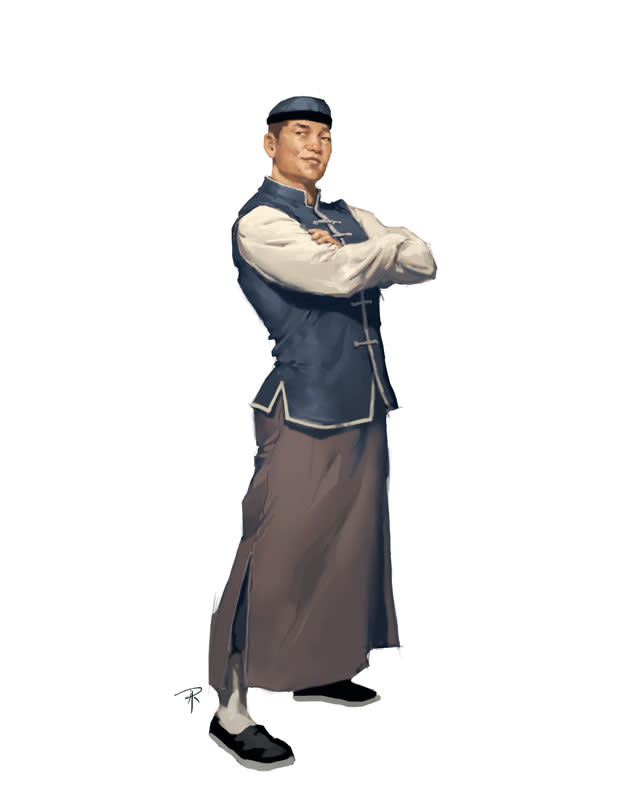
We're still in the earliest days of this campaign, with many more sections of the book to preview and, I'm sure, many more backers to join in!
Please continue to spread the word on your social media and in your social circles, and let's see if we can expand our roster of Instant Mages and get some great Mage: The Ascension fiction added to our rewards list!
And we'll have some Victorian Mage fiction of our own coming next week, so stay tuned for that!
Over the weekend, we'll take a look at the Order of Reason during the Victorian Age...
#M20VA
#VictorianMage
Thu Feb 25 '21 Announcement
about 3 years ago
– Thu, Feb 25, 2021 at 07:10:10 AM
Hello Extraordinary Benefactors!
We had a GREAT day yesterday! Not only did this project officially hit the funding target in under 24 hours, we've also revealed - and unlocked - our first Stretch Goal!

As we increase the overall funding and support for the project, we’re able to add additional resources to the project, expand the rewards listed, and add in new offers and opportunities. Each Stretch Goal will have a target that, once reached, will add a new opportunity or expand upon a supplemental project. We will continue to build on this list when we achieve these targets during the campaign. Whenever we achieve a stretch goal, the image will be updated to reflect the achievement.

UNLOCKED! - At $42,000 in Funding - Backer T-Shirt! – A Victorian Mage-themed Kickstarter Backer shirt will be hosted on Onyx Path’s Redbubble store for a limited time. Backers will be notified when the shirt becomes available for purchase.

At $50,000 in Funding - Ready-Made Characters – A trio of Ready-to-Play characters will be released as a PDF supplement, providing examples and allowing players to jump right into the wonders of the Victorian Age! Instant Mages will be added to the rewards list of all backers receiving the Victorian Mage PDF.
Not only did we fund and unlock our first goal - we're already well on our way to unlocking our next goal! Should we hit that target, Onyx Path will great a new supplemental PDF with Instant Mages, ready to play right away! And this reward will automatically be added to all backers receiving the Victorian Mage PDF or Victorian Mage deluxe hardcover!
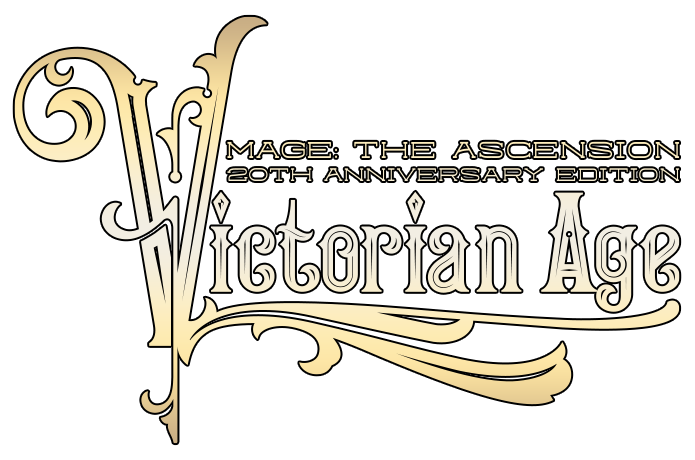
And speaking of characters and thinking about different mages, today we're going to take a peek at Chapter 2 from our draft manuscript and look at a few of the Traditions as they appear in the Victorian Age.
Backers and Benefactors of this project will be sent an e-mail every Wednesday morning with another section of our draft manuscript. If you joined us on our first day and didn't receive it, please double check your spam folder to see if the message accidentally got magicked away. And for those who've joined since, we'll be including links to all previous manuscript previews with each new communication, so you won't miss out on anything.
Today, we're going to quick look at The Ahl-i-Batin and the Chakravanti, but this weekend we'll start to dive into future chapters and share some bits from the manuscript being sent out next Wednesday. So, join in if you're interested!
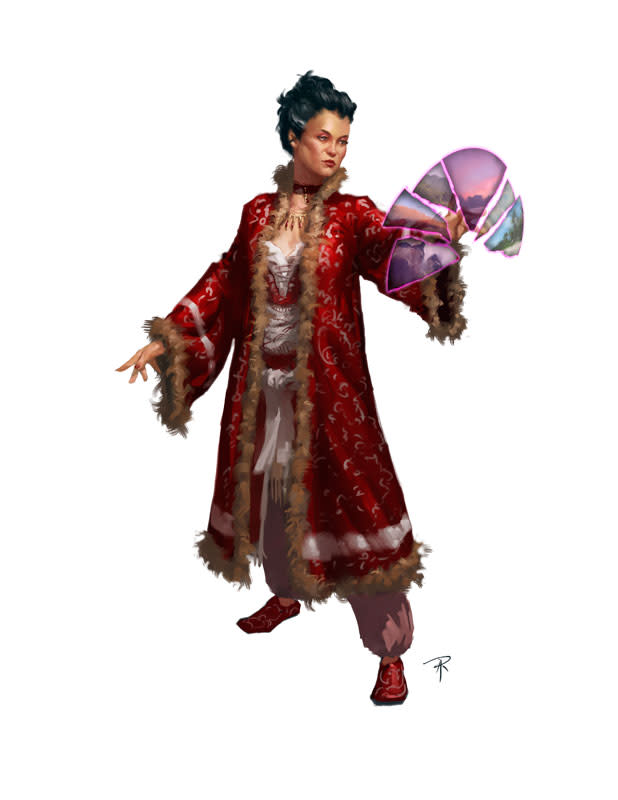
The Ahl-i-Batin
If we remain divided, we will fall.
During this era, most Ahl-i-Batin have two closely related goals ― to defend against the threats posed by both European imperialism and the Order of Reason, and to unify the Council of Nine so that it can better defend itself from what they see as the Order’s growing power. While the Order of Reason secularized the Cabal of Pure Thought, transforming it into the Lightkeepers, the Ahl-i-Batin still remember how the members of this Convention hunted them all across the Middle East, and see no evidence that the Order of Reason’s motives or tactics have become any more benign.
However, for all their emphasis on unity, the Ahl-i-Batin are themselves divided. For the entire Victorian era, there are effectively two separate branches of this Tradition. The larger of the two has considerably more secular power because it is deeply enmeshed in the politics and governance of the fading might of the Ottoman Empire.
Most of these Batini lack any official position within the government, but they have positioned themselves so they are trusted advisors and confidants to many senior Ottoman officials. In addition, they use their command of Correspondence to relay messages across the empire faster and more accurately than even the increasingly common telegraph lines. While they have significant ideological differences with the Taftȃni, this branch of the Ahl-i-Batin also regularly work with members of that Craft in their effort to protect the Ottoman Empire from both external aggression and internal movements seeking to splinter this empire.
This branch of the Ahl-i-Batin is also loosely allied with the Mübarek Maharet Meclisi (Court of Sacred Sciences). However, a branch of this Craft is increasingly dominated by barely religious technomancers who are increasingly dismissive and contemptuous of the Subtle Ones’ mysticism and religious faith. As a result, these Batini have been warning the other members of the Council of Nine of the Order of Reason’s efforts to co-opt some groups of non-European technomancers into their fold as part of the Order’s plan to expand their paradigm across the entire world.
These more secular Batini also use their talent with Mind magicks to both locate corrupt and treasonous members of the Ottoman government, while subtly influencing officials they know to be wise and honest so they will be more likely to uncover the efforts of these wrongdoers. A few Subtle Ones actually work within the Ottoman government, almost always in crucial but easily overlooked positions where they use a combination of social connections and the ability to anticipate their colleagues’ and superiors’ needs and questions to make themselves indispensable, and to occasionally drop crucial tidbits of advice in the correct ear.
The other branch of the Ahl-i-Batin focus on what has always been at the heart of this Tradition, a mystical quest for unity. Like generations of their teachers before them, these Batini seek to understand the truths hidden in Mount Qaf. Some of these mystics focus only on their own enlightenment, dwelling in the slopes of this sacred mountain, and rarely turning their powerful gaze away from its glorious summit. However, for most Ahl-i-Batin, mysticism and religious faith go hand in hand, and they see the wisdom they derive from their contemplation of Mount Qaf as something they must share with the world. While the other branch of the Batini concerns itself with the mundane politics of the Ottoman Empire, most of the more mystically inclined Subtle Ones seek to impart their wisdom and their increasingly strident calls for unity to the Council of Nine.
Between the threats posed by the Fallen and the Order of Reason, and the fact that the Council of Nine now consists of eight Traditions that are primarily united by their disagreements, these members of the Ahl-i-Batin have been attempting to convince magi from different Traditions and Crafts to work together for both mutual defense and shared enlightenment. Unfortunately, their efforts at unifying the Council of Nine have experienced serious problems because of tensions between primarily Western European Traditions, like the Order of Hermes and the Celestial Chorus, and Traditions where all or most members are from elsewhere in the world. Far too many members of both the Order of Hermes and the Celestial Chorus have embraced imperialism as both a wonderful boon for their own nations and a method of “civilizing” supposedly less enlightened peoples, and few members of non-Western Traditions like the Akashayana or the Dream-Speakers have any patience for such ideas.
Disagreements about imperialism also lie at the heart of the division between the more secular Batini, who work with and occasionally for the Ottoman government, and the independent mystics who are more closely connected to the Council of Nine. Although both groups oppose the Order of Reason and efforts to destroy the Ottoman Empire, they differ about the best way to achieve these goals. Most Subtle Ones working with the Ottoman government vividly see the threat European imperialism poses to maintaining their state’s independence. They also better understand the ways in which the Order of Reason is using Sleeper imperialist ventures to advance their own agenda.
In contrast, many Batini who work with the Council of Nine see the necessity of the Traditions unifying as being sufficient reason to not protest or even criticize European imperialist conquests in both Africa and Asia, especially since many of the younger members of the Western European Traditions openly celebrate these efforts. Most of these Subtle Ones are offended by the bigotry and support for imperialism within both the Order of Hermes and the Celestial Chorus, but hold their tongues in an attempt to prevent the Council of Nine from further fragmenting.

Chakravanti (Euthanatoi)
Death is my burden, not yours — you are a burden upon the world around you. Your greed a curse that has starved hundreds. I relieve the world of you.
The flash of a knife, the flare of gun smoke, the final crimson spray that marks the end of one life. The Great Wheel turns a fraction more, as a necessary death clears the way for it to spin. The secret is that life should improve the world with every incarnation, and that death should leave the way clear for better things. The first doesn’t always happen, but the second is inevitable. The dutiful burden of the Chakravanti is in ensuring the inevitable is just so, and that it comes at its due time to the most deserving. The mystic arts of death are their providence. Kismet draws them towards their deserving victims — those whose lives poison the world and make it weaker, poorer, or broken in some way. Bad karma catches up with people and, when it does, it is wearing the face of the Euthanatoi.
The Chakravanti are a Tradition bound together by the heavy burden they take on themselves and by the blood-spattered paths they must walk down, doing what is necessary to keep the cycle in flow. Many cultures around the globe have their own whispers of shadowy organizations that bring death to the deserving, but such people are not often seen as heroes; rather, as entities to be feared, working in accordance to their own sense of justice rather than the morals of society. As such the Chakravanti, while at their most prominent throughout India, Asia and Africa, exist everywhere. They vary in aspect as widely as the cultures in which they dwell — and now conceal themselves within. The Order of the Black Widow and the many cults in India use disparate techniques and details of philosophy, as do the Feather of Ma’at and the Roots of Yggdrasil. Yet they are unified by their dedication to what must be done, and the terrible price they must pay to do it.
Destiny, fate, and entropy fuels the Art of the Euthanatoi; of all the Traditions, their focus lies most in the mortal world, fulfilling a duty they long ago swore themselves to uphold. However, while the Chakravanti are killers, they are not blinded by bloodlust. The Wheel turns smoother if here is less disruption on the path of the departed, as such a snake bite, strange disease that afflicts only a single target, or bad reaction to local food and climate — all hallmarks of a passing death-magus. Bad luck slays as efficiently as a dagger, and with less trace. Not all can be ended such subtle means though, and so the Chakravanti appear as solitary figures or small bands moving like fleeting shadows, untouchable as the mist. They slay with flashing blades, lassos and garrotes, weighted entangling weapons, and impossibly sharp razors that dance on the air and never miss. Reports of such attacks tend to vanish before making it to their destination, but as the Order of Reason pays more heed to deaths under unusual circumstances and watches for where information ceases to flow, the Chakravanti falls more and more under their gaze.
Every Euthanatos risks the taint of jhor, a stain upon the soul that comes with the repeated taking of life and forms a precipice between prescient balance and all-consuming madness. It is possible while engaging in the Thanatoic Arts to lose oneself completely to the duty, while not realizing that the duty has become something else — a terrible desire, a hunger, that cries to be satiated with yet another life, and let the killing be justified as “balance” after the fact. Given the precepts for the burden of death, it can be hard to spot a Chakravanti slipping into jhor; the line is so very fine. Yet despite the risks, and growing rumors of Euthanatoi falling to infernal practices, the assassins of the Tradition continue to produce a staggering body count across the 19th century.
Europe sees a different manner of fate-bringer at work, one that inspires fear as a method to clear the way for the Wheel as well as using death. Here, their assumed names (often ones planted purposefully by Euthanatoi or by helpful Sahajiya in penny dreadfuls) and deeds may be shared by more than one death-magus, creating an urban legend of vengeance, justice, and terror across the cities of the British Empire and the other European powers. Such names live in infamy through the minds of the population, and act as very real cautionary tales for the high and low of society alike.
Some Euthanatoi investigate famous mundane, albeit disturbed, murders or the depredations of Night Folk, bygones, or even Marauders and Nephandi; others use these grisly murders as cover for their own activities, or appropriate the killings into their own web of terror. Tangling with such a twisted collection of killers comes with its own risks, however, and members of the Tradition find themselves dodging detectives even as they attempt to hunt down their own dark mirrors in the cities and towns of Europe and North America.
In the often-cruel American west, Chakravanti live the life of the urban legend — the lone stranger, the man with no name, the righteous killer. Heartless rail barons, greedy plantation owners, abusive clergymen, and soldiers soaked with the blood of women and children all come under the gaze of the fate-bringer. Some are every bit the monsters that exist in Europe, or the terrors that prowl through the colonial fringes; the death-magi seek repayment for the blood debt wrought upon native peoples by imperial ambitions. Chakravanti are often the only effective hand of justice or vengeance for isolated towns facing the cruelties of the powerful and the greedy. Yet the mantle of “hero” rests poorly upon magi just as bathed in blood as those they hunt, and so they rarely stay beyond the need of their burden and duty.

To further discuss what you’ve read in today’s manuscript preview, feel free to post a comment on our Indiegogo comments section.
You may also be able to get further insight and possibly some in-depth conversation at these Onyx Path discussion zones:
Thanks to everyone for your support in these first days, and for spreading the word about this experiment! We're doing great, and we've still got 4 weeks to build on this early success!
#M20VA
#VictorianMage







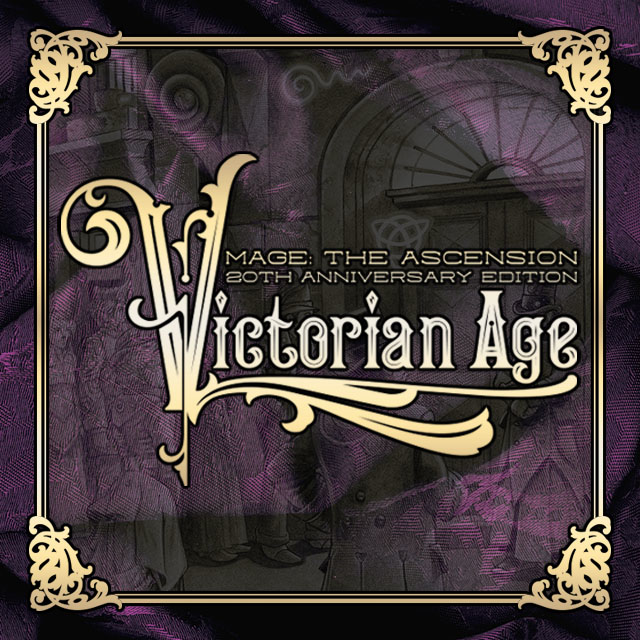




 For more information on the Order of Reason and the Victorian Age as seen through the eyes of M20, please join our campaign before Wednesday to receive a preview of the current draft manuscript! On Wednesday morning, I'll be sending all backers links to download Chapters 1-4, and we'll repeat the process each Wednesday for the remainder of the campaign, adding new chapters each week. Before we're done, the entire draft manuscript will be available for you to read.
For more information on the Order of Reason and the Victorian Age as seen through the eyes of M20, please join our campaign before Wednesday to receive a preview of the current draft manuscript! On Wednesday morning, I'll be sending all backers links to download Chapters 1-4, and we'll repeat the process each Wednesday for the remainder of the campaign, adding new chapters each week. Before we're done, the entire draft manuscript will be available for you to read.













